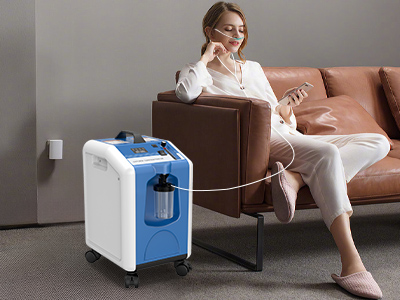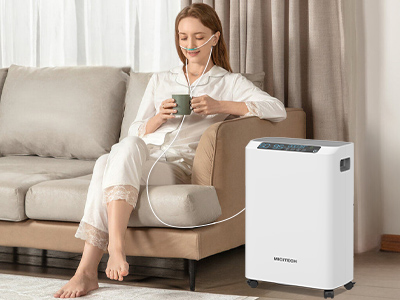10 Nov 2023
Oxygen concentrators have revolutionized the medical and industrial sectors, providing a continuous source of oxygen for various applications. Within this realm, distinguishing between two distinct technologies, Pressure Swing Adsorption (PSA) and Vacuum Pressure Swing Adsorption (VPSA), is crucial for selecting the most suitable oxygen concentrator.

Understanding PSA Oxygen Concentrators
A. Pressure Swing Adsorption Technology PSA technology relies on the principle of adsorption and desorption to extract oxygen from ambient air, with remarkable efficiency.
B. Oxygen Production Process 1. Adsorption During adsorption, oxygen is selectively retained by the adsorbent material while other gases are allowed to pass through.
2. Desorption In the desorption phase, the adsorbent is depressurized, causing the release of the collected oxygen.
C. Key Features of PSA Oxygen Concentrators PSA oxygen concentrators are known for their reliability, compact size, and ability to deliver high-purity oxygen suitable for medical applications.

Exploring VPSA Oxygen Concentrators
A. Vacuum Pressure Swing Adsorption Technology VPSA oxygen concentrators introduce vacuum and pressure phases to enhance the oxygen production process.
B. Oxygen Generation Mechanism 1. Adsorption under Vacuum VPSA technology initially subjects the adsorbent to a vacuum to increase its adsorption capacity.
2. Desorption under Pressure The desorption phase involves pressurizing the adsorbent, releasing the trapped oxygen for collection.
C. Unique Aspects of VPSA Oxygen Concentrators VPSA oxygen concentrators are distinguished by their ability to generate oxygen efficiently at lower pressure levels, making them suitable for various industrial applications.
Oxygen Purity and Production Rate
A. PSA Oxygen Concentrator Purity and Production PSA oxygen concentrators typically offer high purity levels, ranging from 90% to 95%, with production rates in liters per minute (LPM) that match medical requirements.
B. VPSA Oxygen Concentrator Purity and Production VPSA oxygen concentrators can achieve purity levels comparable to PSA concentrators, but with the added advantage of higher production rates, often exceeding 20 LPM.
C. Matching Technology to Specific Requirements Selecting the right technology depends on the specific application, considering oxygen purity, production rate, and efficiency.
Energy Efficiency and Cost Considerations
A. Energy Efficiency in PSA Oxygen Concentrators PSA oxygen concentrators are known for their energy efficiency, reducing operational costs over time.
B. Energy Efficiency in VPSA Oxygen Concentrators VPSA concentrators, with their high production rates and lower power consumption, offer a cost-effective solution for industrial and commercial users.
C. Cost Implications of Each Technology While PSA concentrators have a lower upfront cost, VPSA concentrators often prove to be more cost-efficient over the long term.
Application Areas and Use Cases
A. Medical Applications for PSA Oxygen Concentrators PSA oxygen concentrators are ideal for medical settings, providing a consistent supply of high-purity oxygen for patient care.
B. Industrial and Commercial Uses of VPSA Oxygen Concentrators VPSA technology finds extensive use in various industrial applications, including wastewater treatment, glass manufacturing, and metal processing.
C. Crossover in Application Domains There are instances where the choice between PSA and VPSA technology may overlap, as industries and healthcare facilities explore options that best meet their needs.
Maintenance and Durability
A. Maintenance Requirements for PSA Oxygen Concentrators PSA concentrators generally have lower maintenance needs, ensuring consistent and reliable operation.
B. Durability of VPSA Oxygen Concentrators VPSA oxygen concentrators are designed for durability and high-duty cycles, catering to the demands of industrial environments.
C. Long-Term Cost Analysis A long-term cost analysis should consider maintenance and durability, as well as the specific operational demands of the chosen technology.
Conclusion
A. Selecting the Right Oxygen Concentrator Choosing between PSA and VPSA oxygen concentrators hinges on the intended application and the specific requirements for oxygen purity, production rate, energy efficiency, and long-term cost-effectiveness.
B. Maximizing Oxygen Generation Efficiency Ultimately, the choice of oxygen concentrator technology should be aligned with the goal of maximizing oxygen generation efficiency in a given application, ensuring a reliable and economical oxygen supply.
Keywords: oxygen concentrator
Originally published 10 Nov 2023, updated 10 Nov 2023.